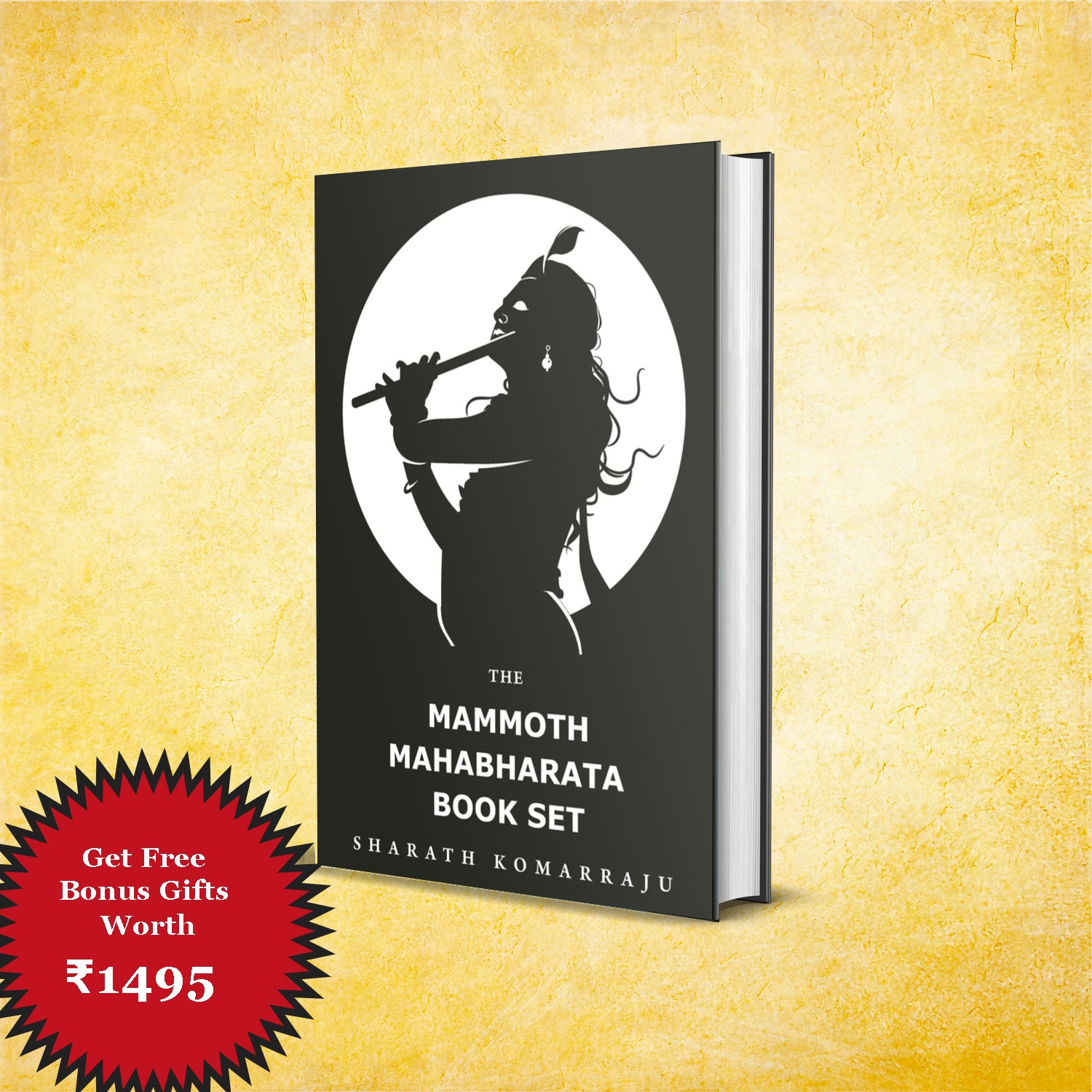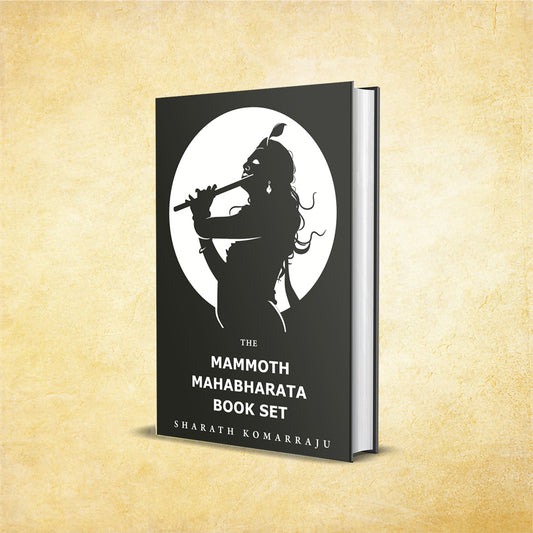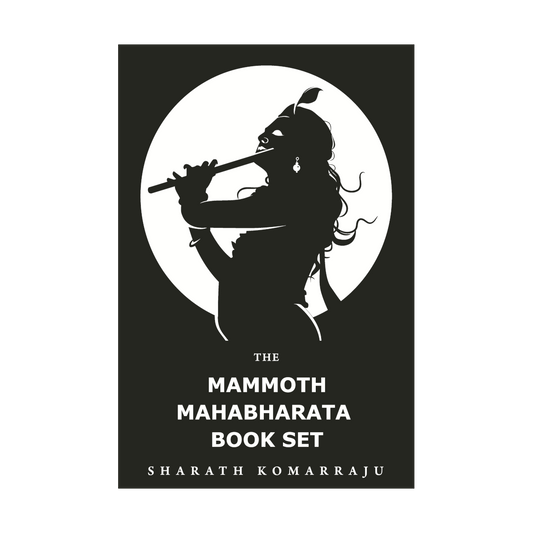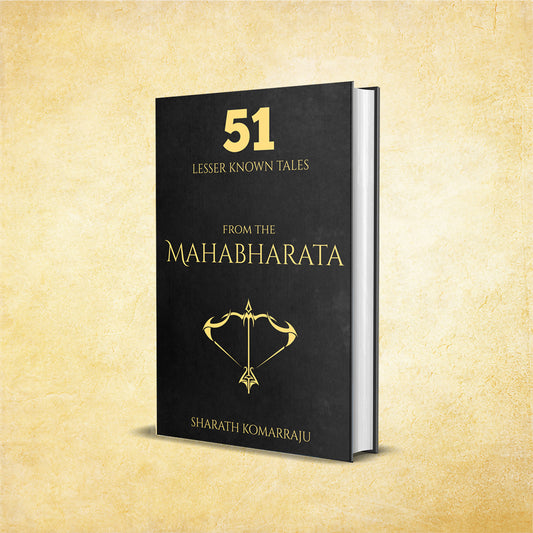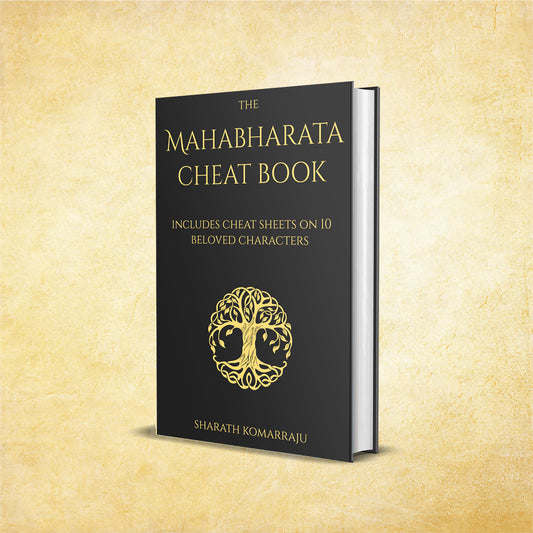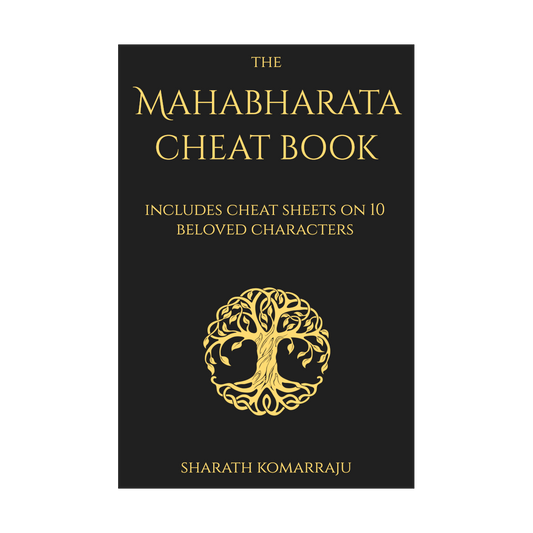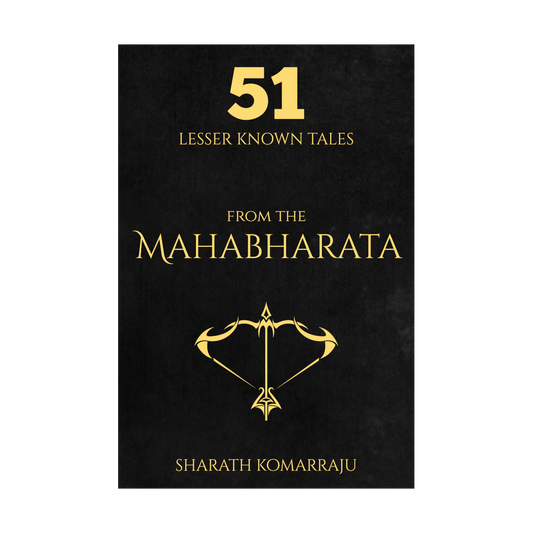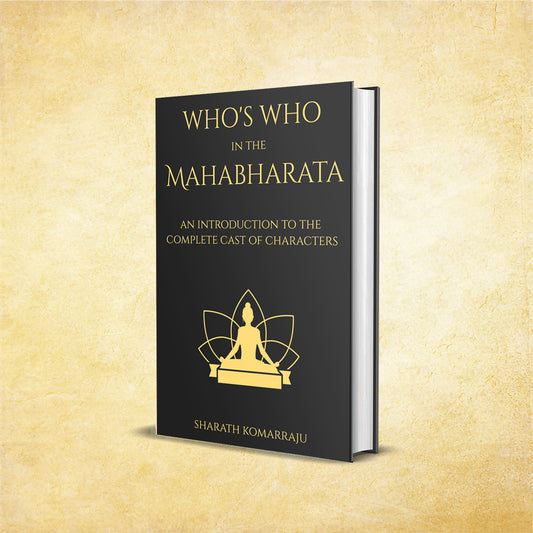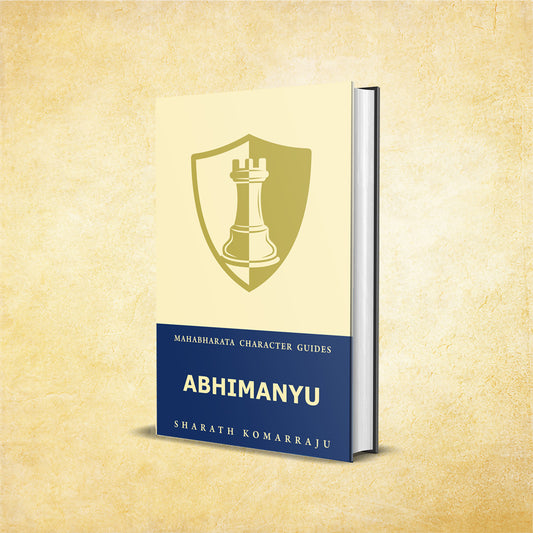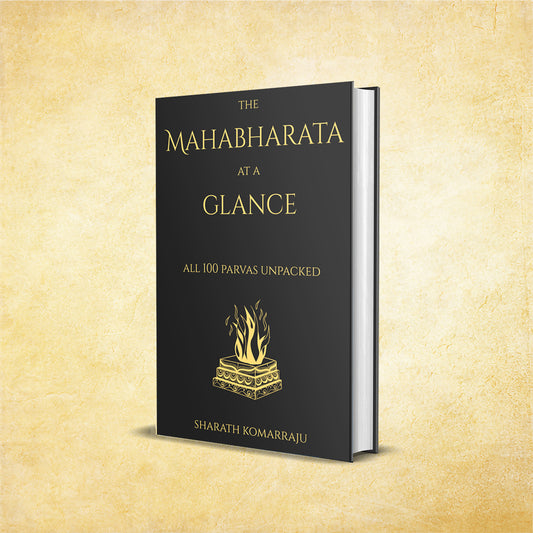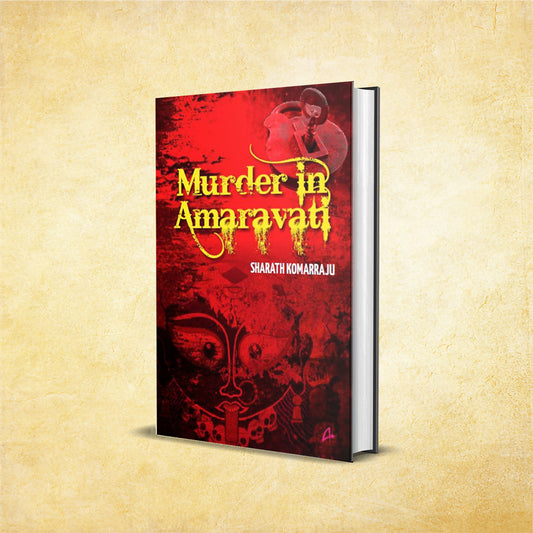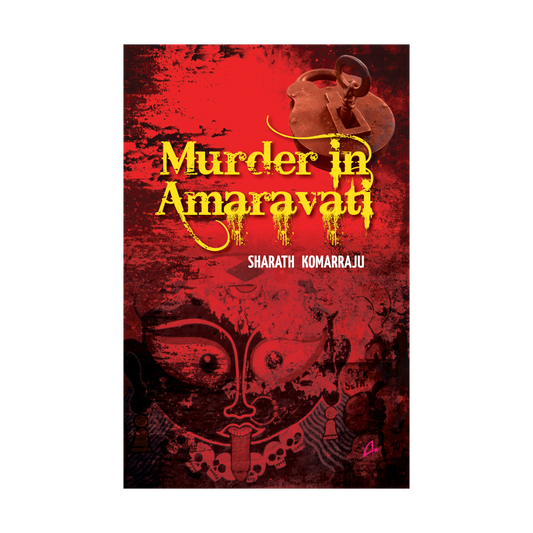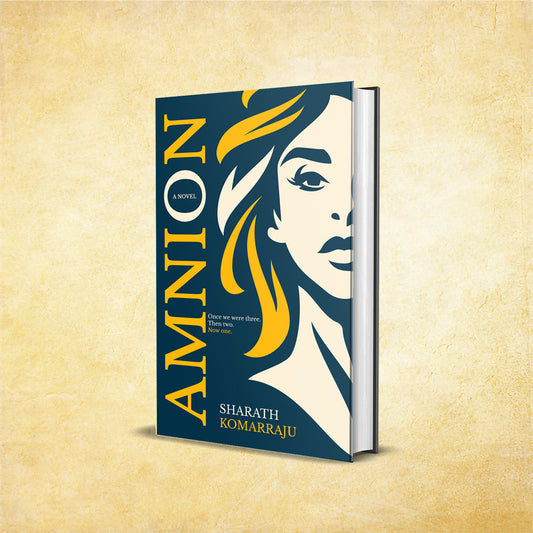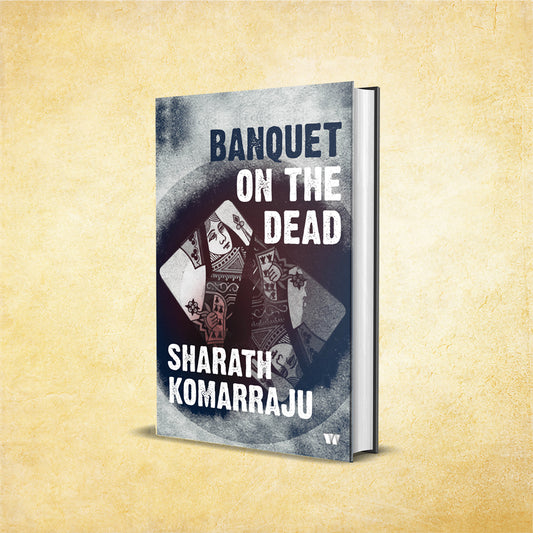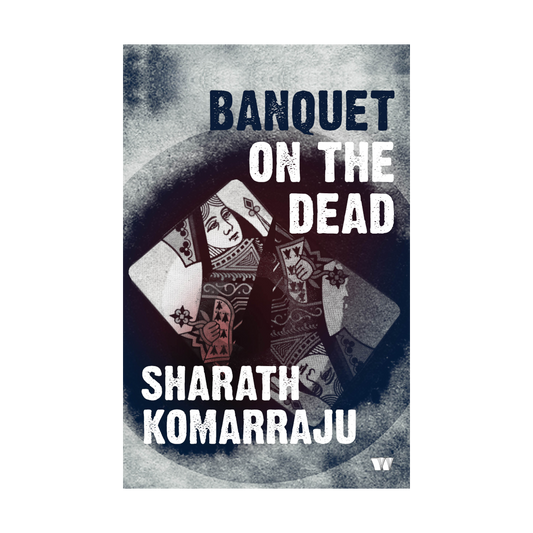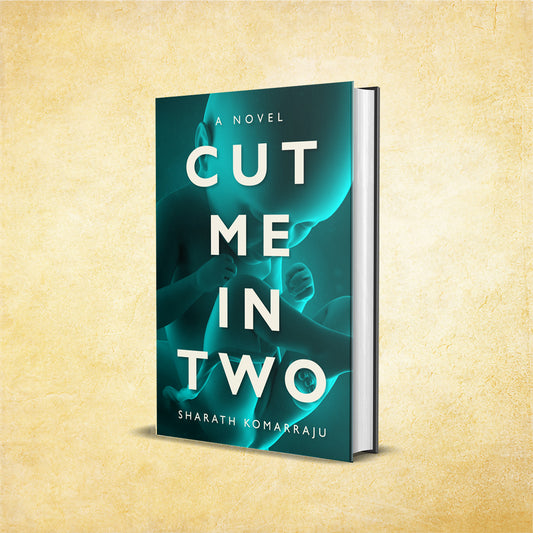The Mammoth Mahabharata Book Set Bundle - With 7 Bonuses!
Wisdom at its deepest, entertainments at its finest, Indian Culture at its best. 58 Books, 3000+ pages, more than 100 hours of reading material.
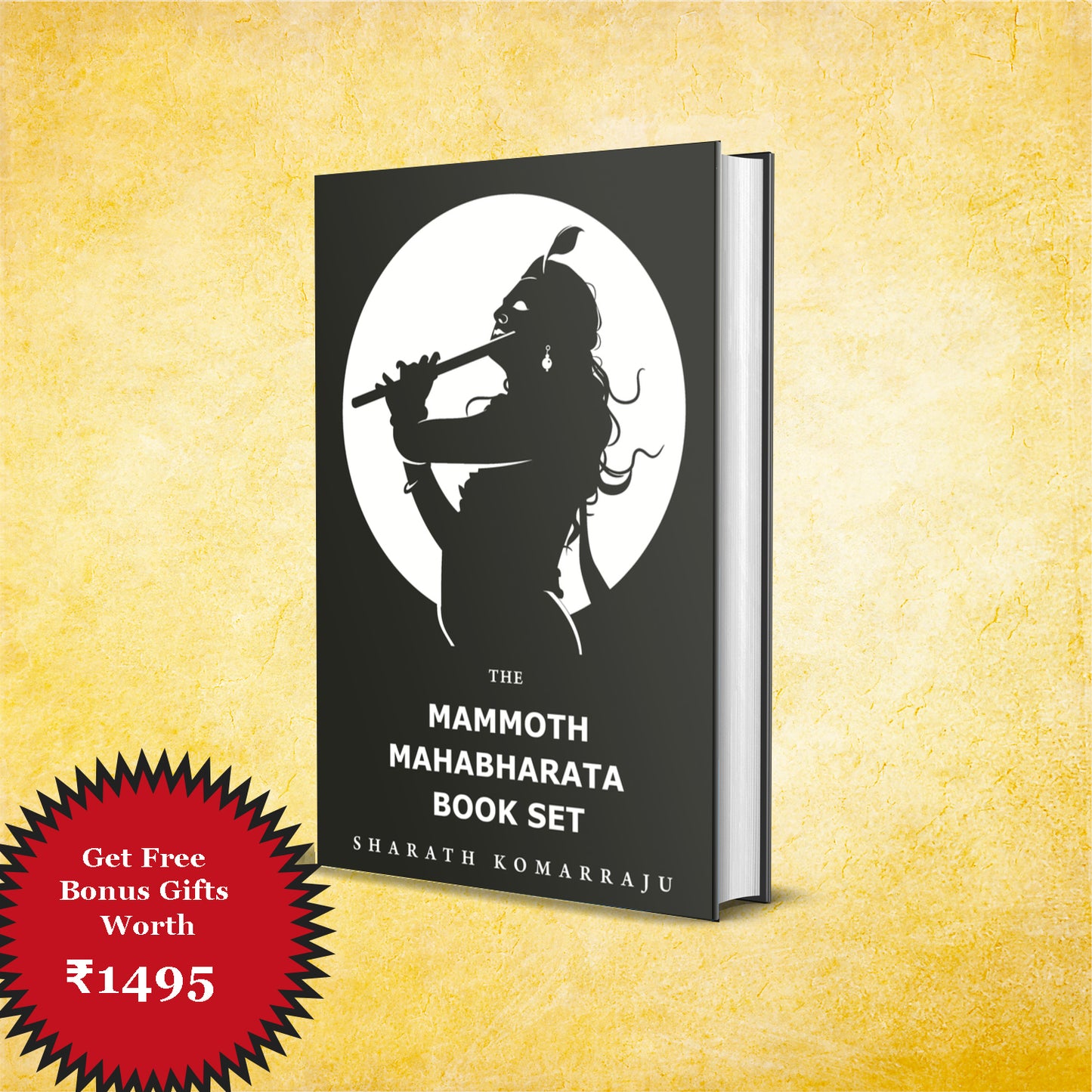


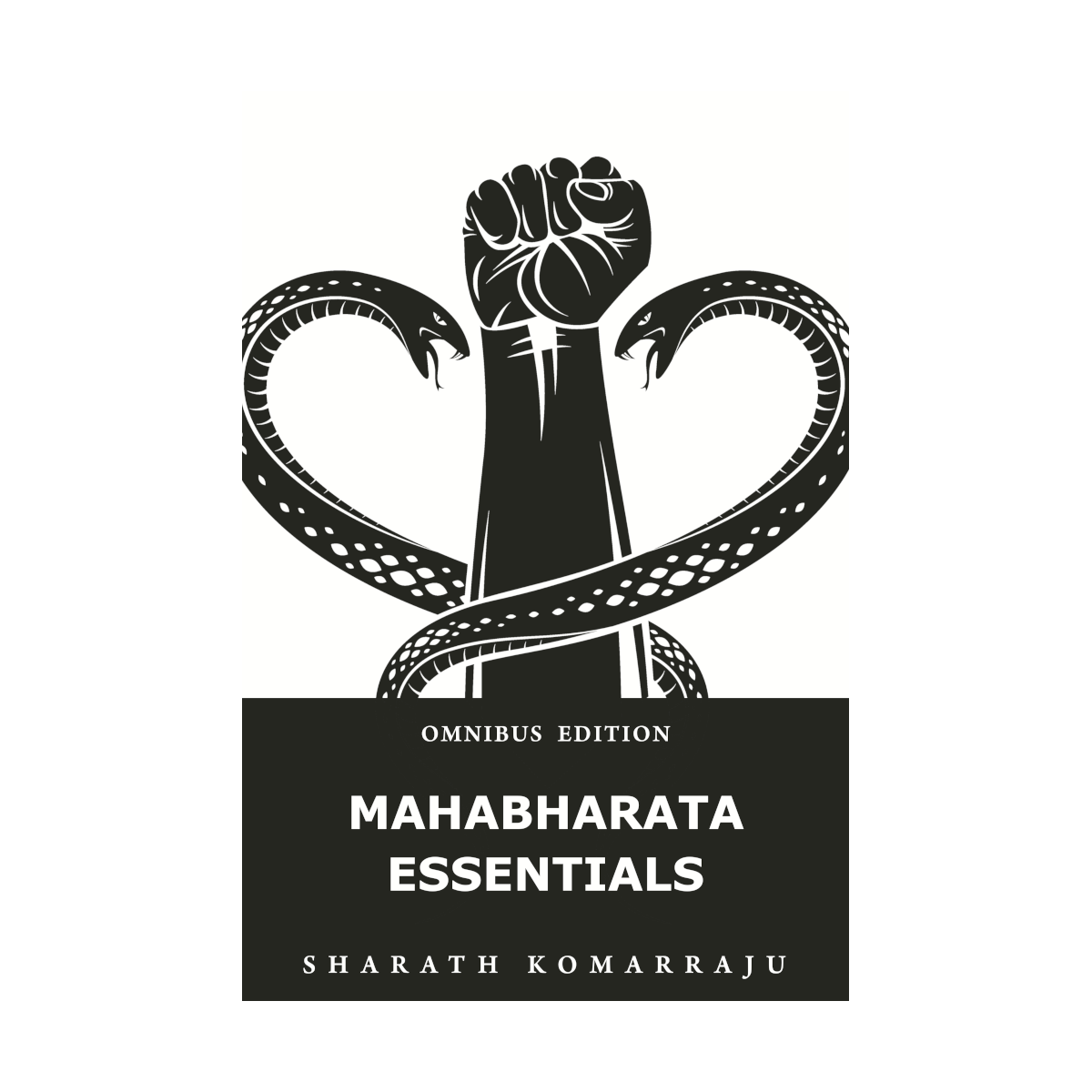
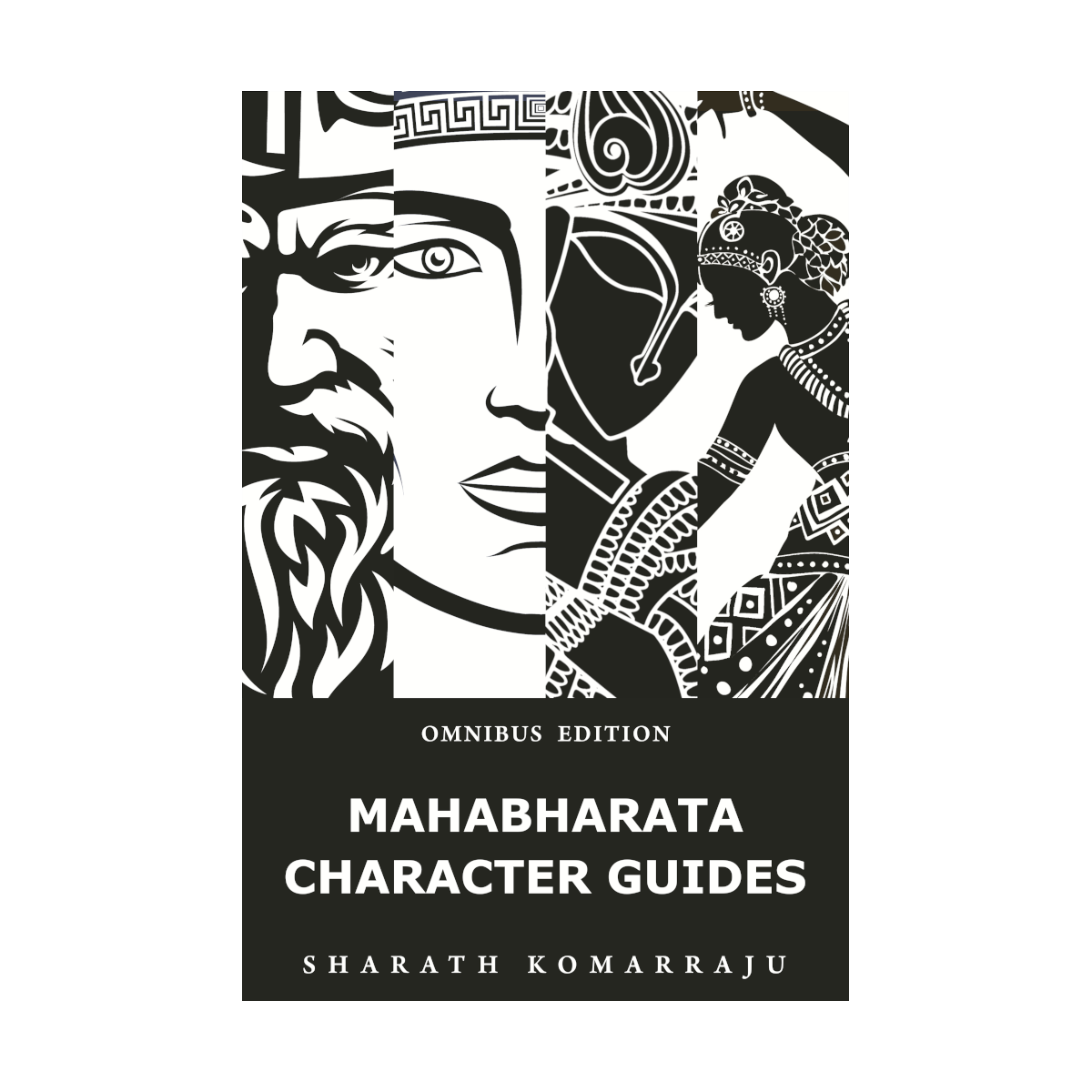



Let customers speak for us
from 243 reviews
As a devoted reader of mystery novels, I found Sharath Komarraju's "Murder in Amaravati" to be particularly evocative, especially in his meticulous portrayal of the Kali temple and the authentic description of Krishna Shastri's morning rituals in the opening chapter, which transported me completely into the riverside village. Having heard of Sharath Komarraju through his acclaimed Hastinapur Series but never actually reading his work before, this bundle at such a reasonable price point seemed like the perfect introduction. Very happy!

"The Rise of Hastinapur" stands out for me in this bundle, particularly in its portrayal of Gandhari's journey from deception to self-discovery, revealing layers of strength in a character often reduced to a vengeful stereotype. Interesting to see how modern financial jugglery has made it into a Vedic India story! Though I'd heard of Sharath Komarraju before and seen his books in bookstores, I'd never tried his work. As someone deeply fascinated by the Mahabharata, I found "The Hastinapur Bundle" to be a revelation.

I found myself completely immersed in Sharath Komarraju's mysteries featuring the legendary Birbal. What particularly impressed me was how he transformed a character I knew from childhood tales into a compelling detective. I particularly favored "The Tree Bears Witness" for its cleverness. Sharath's writing is evocative, drawing you into 16th century Mughal India with such skill that you can almost smell the incense in the emperor's court. Second to none in this genre!

"The Mahabharata War: A Summary" stands out as my absolute favorite—Sharath's precise analysis of battle strategies and ethical dilemmas made the central conflict crystal clear. Sharath Komarraju's conversational style feels like exploring these ancient tales alongside a knowledgeable friend. Whether you're introducing these timeless stories to children or deepening your own cultural understanding, this collection will serve your needs perfectly.

I spent over forty hours immersed in these profound 1,500+ pages, discovering profound wisdom in not only the well-known figures like Krishna and Arjuna but especially in the less celebrated characters like Dhritarashtra and Bhima. I'd never heard of Sharath Komarraju before purchasing this bundle, but the 30-day money-back guarantee gave me confidence to explore his work. Sharath's perfectly organized chapters make complex relationships easy to understand. Highly recommended!

My journey with the Mammoth Mahabharata Book Set began when I was searching for a comprehensive resource to deepen my understanding of this epic. The collection of 52 books with over 6000 pages has transformed my daily routine, as I now eagerly look forward to my reading sessions. Sharath's writing style is remarkably thoughtful and engaging. I can confidently say this investment has been intellectually rewarding. I especially appreciate how Sharath takes care to present multiple perspectives on events and characters.

The 3000+ pages delivers a profound journey from Adi Parva through Swargarohana Parva without omitting a single crucial element, creating an immersive experience that feels less like reading and more like having a personal guide. I've been particularly captivated by the Stri Parva and Sauptika Parva sections, which Sharath presents with such emotional resonance. Though I typically prefer physical books for serious study, the printable PDF option has proven remarkably effective for deep engagement. Go for it!

The 52 books spanning over 6000 pages might seem intimidating, but Sharath's conversational writing style makes you feel good. The Mahabharata Character Guides Omnibus became my favorite section as it helped me understand the complex motivations behind each character's actions. The printable PDF option is an added bonus for those special passages I wanted to highlight and revisit. Highly recommended!

I've devoted over 10 reading hours exploring these volumes, and "Who's Who in the Mahabharata: A Complete Cast of Characters" has become my favorite. I keep referring to the list of characters to refresh my memory. I'd tried several other Mahabharata books before and found them frustratingly dense, but these volumes strike the perfect balance—maintaining depth while remaining completely accessible. Very happy!

As someone who has devoured every book on the Mahabharata, I was absolutely blown away by "The Hastinapur Bundle" and its focus on the overlooked women. Though I'd heard of Sharath Komarraju before and seen his books in stores, I'd never tried his work until now. The way he portrays these six women not as passive side characters but as important political players... highly recommended!

The Mahabharata Reader Bundle offers a contemplative journey through ancient wisdom that feels surprisingly relevant to modern life. The bundle's organization into digestible chapters across three volumes makes this 3000+ page collection approachable to everyone. Though I typically favor physical books for serious study, the flexibility to access these writings across multiple devices has integrated this spiritual journey seamlessly into my daily routine. Second to none among contemporary Mahabharata resources - get them without a second thought!

I've always been a huge fan of psychological thrillers like "Gone Girl," so when I stumbled across this bundle, I knew I had to give it a try. "Amnion" was definitely my favorite of the three - the relationship between Rishabh and his supposedly dead twin sister had me on the edge of my seat. Sharath's writing style pulls you in and doesn't let go until the very last page. Excellent value for money!

For readers who enjoy the Mahabharata, "The Hastinapur Bundle" offers a fresh and compelling perspective through the eyes of six remarkable women whose stories are often overshadowed in traditional tellings of the epic. "The Rise of Hastinapur" quickly became my favorite of the trilogy, particularly in how it portrays Amba's journey from deception to self-discovery, revealing layers of strength and determination in a character often reduced to a vengeful stereotype. You can read these books on any device, on any app, which was incredibly convenient as I switched between reading on my phone during commutes and on my tablet at home. Although I'd heard of Sharath Komarraju before and seen his books in bookstores, I'd never tried his work until this bundle's attractive price point convinced me to take the plunge. His soothing writing style creates an almost meditative reading experience even as the plots move forward with purpose and tension, making these books perfect for both careful study and relaxed enjoyment. Impressed with the author and already looking forward to exploring more of his work!

My mystery addiction needed new material. My bookshelves were groaning in protest. Enter Birbal, the witty courtier-turned-detective! The plots are surprisingly complex. The solutions are elegantly simple. I particularly enjoyed "The Tree Bears Witness." The mystery had unexpected depths. Sharath's writing is soothing. It flows with reassuring confidence. Now I'm hunting for more historical detectives. Perhaps Chanakya solving palace conspiracies next? Ashoka investigating Buddhist temple mysteries? The possibilities are endlessly entertaining!

As someone deeply interested in the Mahabharata, I found "The Hastinapur Bundle" to be a revelation in how it centers the experiences of women whose actions shaped this epic tale. The portrayal of Gandhari in "The Queens of Hastinapur" was particularly moving, showing her resilience and quiet strength. The 30-Day Money Back Guarantee gave me the confidence to purchase. I had never heard of Sharath Komarraju before, but the instant download option with the printable PDF facility convinced me. His intriguing writing brings these ancient characters to life with such warmth. Second to none!
Mahabharata Nonfiction
-
The Mammoth Mahabharata Book Set
Regular price ₹1,499.00Regular priceUnit price / per -
Mahabharata Character Guides Bundle: Omnibus Edition
Regular price ₹699.00Regular priceUnit price / per₹1,400.00Sale price ₹699.00Sale -
Mahabharata Essentials Bundle - Omnibus Edition
Regular price ₹297.00Regular priceUnit price / per₹594.00Sale price ₹297.00Sale -
The Mahabharata Cheat Book
Regular price ₹99.00Regular priceUnit price / per -
51 Lesser Known Tales from the Mahabharata
Regular price ₹99.00Regular priceUnit price / per -
Who is Who in the Mahabharata - A Complete Cast of Characters
Regular price ₹99.00Regular priceUnit price / per -
Abhimanyu: Your Complete Guide to the Mahabharata Hero
Regular price ₹79.00Regular priceUnit price / per -
The Mahabharata at a Glance: All 100 Parvas Unpacked
Regular price ₹99.00Regular priceUnit price / per
Hastinapur Novels
-
The Rise of Hastinapur (Hastinapur, #2)
Regular price ₹249.00Regular priceUnit price / per -
The Winds of Hastinapur (Hastinapur, #1)
Regular price ₹249.00Regular priceUnit price / per -
The Queens of Hastinapur (Hastinapur, #3)
Regular price ₹249.00Regular priceUnit price / per -
The King of Mathura (Hastinapur, #5)
Regular price ₹249.00Regular priceUnit price / per -
The Song of Vrindavan (Hastinapur, #4)
Regular price ₹249.00Regular priceUnit price / per -
The Birth of Dwaraka (Hastinapur, #6)
Regular price ₹249.00Regular priceUnit price / per
Birbal Novels
-
The Tree Bears Witness (Birbal, #2)
Regular price ₹249.00Regular priceUnit price / per -
The Crows of Agra (Birbal, #1)
Regular price ₹249.00Regular priceUnit price / per
Standalone Novels
-
Murder in Amaravati
Regular price ₹249.00Regular priceUnit price / per -
Amnion: A Novel
Regular price ₹249.00Regular priceUnit price / per -
Loyalty Net
Regular price ₹249.00Regular priceUnit price / per -
Banquet on the Dead
Regular price ₹249.00Regular priceUnit price / per -
The Puppeteers of Palem
Regular price ₹249.00Regular priceUnit price / per -
Eternity Begins
Regular price ₹249.00Regular priceUnit price / per -
Cut Me in Two
Regular price ₹249.00Regular priceUnit price / per -
Donoor's Curse
Regular price ₹249.00Regular priceUnit price / per
